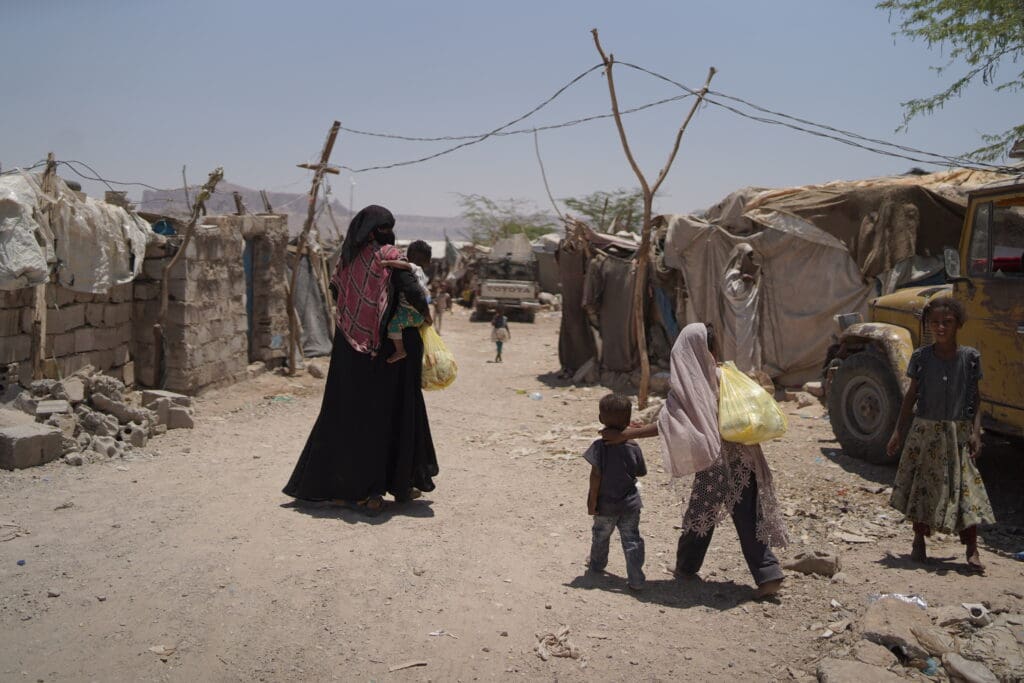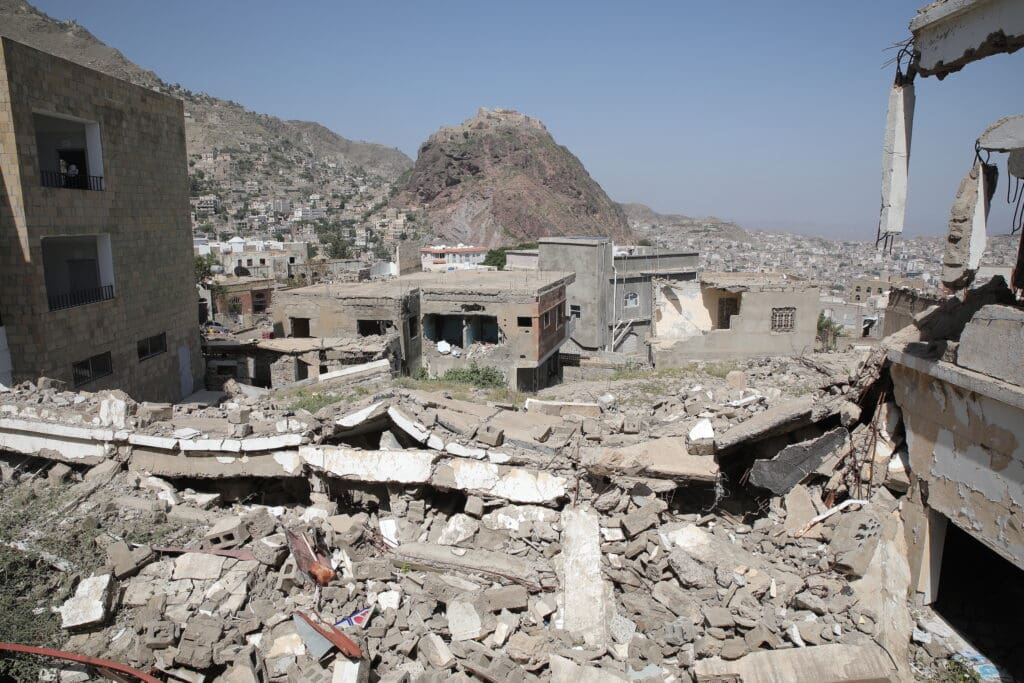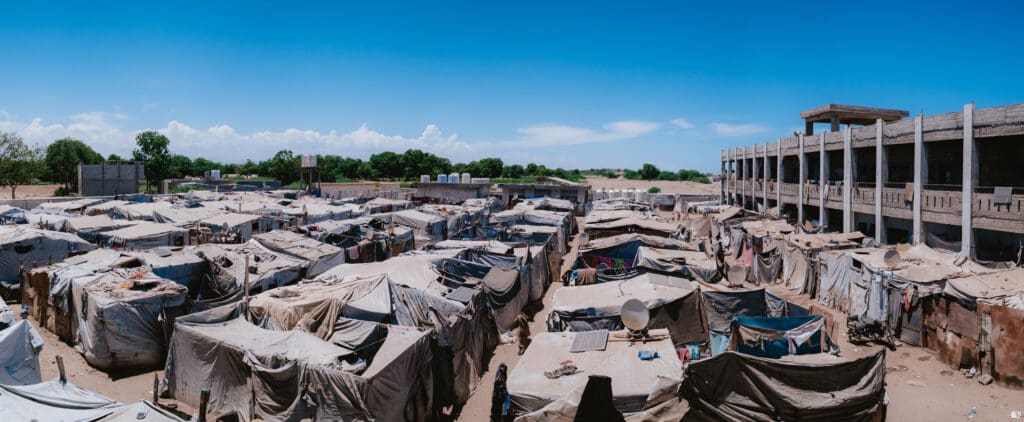What’s Happening in Yemen? An Explainer on the Conflict and Its Impact on Civilians

In recent weeks, you may have read about the uptick in attacks in the Red Sea next to Yemen and how it’s connected to the conflict in Gaza.
Yemen has a long, complex history. In this article, we’ll help simplify what’s going on in Yemen and take a closer look at the challenges of providing humanitarian aid in the region.
What’s Going on in the Red Sea and Yemen Right Now?
Since October 2023, the Houthis have been involved in disruptions to commercial ship traffic through the Red Sea, one of the world’s most important shipping routes that connects Asia, the Middle East and Europe. Over 12% of global maritime trade passes through the Red Sea. The United States and United Kingdom have responded to the attacks and many ships are rerouting around the Cape of Good Hope.
This violence is unfolding against the backdrop of a larger civil war in Yemen. The war began in 2014 when the Houthis took the capital Sana’a. For eight years, the ensuing violent conflict has taken a devastating toll on Yemen’s people.
Basic Facts About Yemen
The country of Yemen as it exists today was formed in 1990 when North Yemen (the “Yemen Arab Republic”) and South Yemen (the “People’s Republic of South Yemen”) were unified.
Yemen is among the poorest countries in the Middle East and North Africa region. It ranks 183 out of 191 countries in the Human Development Index. Out of its population of 32.6 million people, 80% fall under the poverty line which means they live on less than $2.15 a day. Poverty in Yemen has been accelerated by years of conflict.

Yemen is one of the world’s most vulnerable to, yet least prepared countries for, the impacts of the climate crisis. Over the past two decades, droughts and floods have reduced the amount of farmable land from 3% to 2%, which hurts harvests. The conflict in Yemen has also exacerbated the country’s environmental problems including severe water scarcity. For more than a decade, experts have warned that Sana’a may be the first capital city in the world to run out of water.
While the conflict fuels Yemen’s humanitarian crisis, climate extremes are layering on challenges for the country’s most vulnerable people.
History and Background of Conflict and Hunger in Yemen
At the onset of the civil war, between 2014 and 2015, Yemen experienced a 13% increase in hunger . The U.N. World Food Programme has been active in Yemen since 1967, but that year we provided emergency food assistance to an additional 2.5 million people affected by conflict . Along with other humanitarian organizations, we faced challenges in delivering assistance due to the intense fighting and lack of fuel in the country.
On top of the conflict, Yemen experienced two cyclones in 2015 and locust swarms in 2016. Due to these events, combined with high food prices, fuel shortages and import restrictions, the number of Yemenis experiencing hunger grew to 14 million by 2016.

By 2017, the situation had deteriorated rapidly as a cholera outbreak spread to over one million people. 17 million people faced crisis levels of hunger. Also that year, a blockade of Yemen’s ports restricted the U.N. World Food Programme and other humanitarian agencies from delivering aid.
Thanks to immediate funding from governments like the U.S. and Germany, the U.N. World Food Programme significantly scaled up assistance in 2019 and increased the number of people it reached with lifesaving food from 8 million to 12 million. This scale-up helped prevent famine and pull families back from catastrophic levels of hunger. But in 2020, the COVID-19 pandemic and continued fighting put Yemen at risk of famine.
While the Yemeni civil war waged on, a new war in Ukraine in 2022 added a new dimension of difficulty to Yemen. The war in Ukraine caused global food prices to skyrocket which made food unaffordable for many families around the world. Closed Ukrainian ports also prevented critical grain shipments from reaching countries like Yemen.
In 2022, the United Nations brokered a truce that was renewed and extended multiple times. Though the truce expired in 2023, conflict has remained minimal as negotiations continue.
The recent conflict in the Red Sea, related to the conflict in Gaza, is concerning as it may undermine the current efforts to bring a close to the civil war in Yemen.
How Has the War Affected Civilians?
Eight years of war in Yemen have taken a devastating toll on civilians. The conflict has claimed over 377,000 lives and displaced 4.5 million people. 21 million people need humanitarian assistance, and 17 million people in Yemen are extremely hungry .
The conflict has destroyed the country’s infrastructure, including major roads and airports. The collapse of the economy, high cost of goods and devalued currency make it very difficult for people to access basic necessities.

What Is Being Done to Help People in Yemen?
The needs in Yemen are overwhelming, but currently there are over 140 aid organizations trying to help people in Yemen, including the U.N. World Food Programme. Humanitarian assistance includes food, water, shelter and medicine.
The U.N. World Food Programme provides emergency and long-term assistance to people in Yemen. It also plays a unique role by supplying much of the logistics capacity for the humanitarian community, providing coordination and transportation for many of our aid partners.
The U.N. World Food Programme is providing food assistance in southern Yemen through emergency food boxes. Due to a funding shortage, we have paused general food distributions in northern parts of Yemen. Across Yemen, we continue to provide nutrition support to pregnant and nursing mothers and children under five, alongside food vouchers and cash, which stimulate the struggling economy.

To help rebuild the damaged infrastructure of Yemen, the U.N. World Food Programme provides food to communities while training them to repair roads, agricultural lands, schools and health facilities.
You can be a part of saving lives and rebuilding futures for families in places like Yemen who are experiencing conflict.




